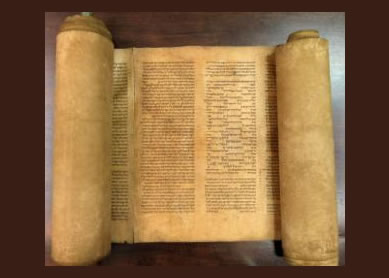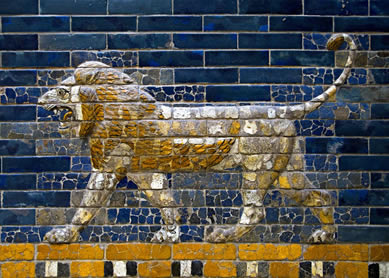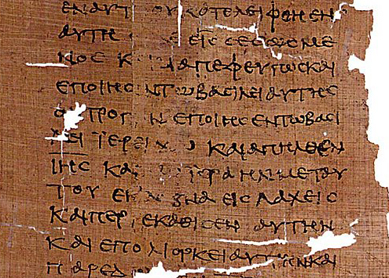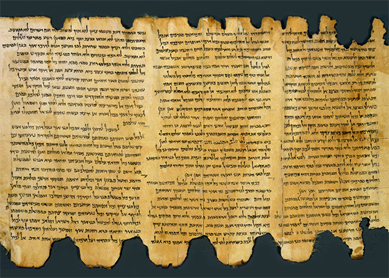The similarity of parts of the Hebrew Bible to various texts from ancient Mesopotamia, ancient Egypt, and the rest of the ancient Near Eastern world raises questions that have led some to ask if the Hebrew Bible is plagiarized. To address this question, we need to both understand the concept of plagiarism, especially in the ancient world, as well as the context of the world in which the biblical materials developed.
What is plagiarism?
The question of plagiarism would not have arisen when the Hebrew Bible/Old Testament first was written down well over two millennia ago. The word plagiarism derives from the Latin plagium (“kidnapping”), a word that in turn is likely related to the older Greek plagios (“side” or “flank”) and its relative plagion (“slanting”). In common use, the Latin plagium essentially referred to the kidnapping or stealing of a slave, that is, taking another’s possession. In the first century CE, the Roman poet Martial (40–104 CE) used the term to accuse another of reciting his words without attribution or paying for their use (which he would have allowed!). The concept of stealing another person’s creations had occurred earlier in Classical Greece when Isocrates (436–338 BCE) claimed others were using his words and claiming them for themselves; however, he used the word klepto (“to steal”), emphasizing that what he wrote he considered to be his property; he owned it. Clearly in both the Greek and the Latin, there is a sense of identifiable individual ownership of creations such as poems, plays, or other types of creations. Thus the basic understanding of plagiarism lies in the sense that what an individual creates belongs to that person as the creator and should not be used in any way without permission or attribution, a concept that mirrors that of the modern world.
In what context did the Hebrew Bible develop?
The context in which the Hebrew Bible developed was a little different. The Hebrew Bible in the form known today developed by means of both oral and written transmission. Literacy was extremely limited, which meant that the spoken word predominated. Narratives, hymns, and similar materials persisted in oral tradition for lengthy periods prior to being written, and there was no single, fixed form of any tradition. This means that no single individual was—or even could be—identified as the author who would be considered the owner of a created property, even when the name of a known person might be attached to a particular text.
When writing did occur, we have clear evidence of written variants for the Hebrew Bible materials (e.g., the Dead Sea Scrolls), and until the development of the modern printing press in the fifteenth century CE, manuscripts were copied and recopied by many different hands with revisions and mistakes occurring along the way. A single written text was, as it were, a group effort. If a specific name was attached to a work, it was often done so to lend it prestige many years after the person lived. Even when a name is attached or linked to a particular narrative, the writers were drawing on many sources for what we have now. For example, the story of the flood in
In a second example, the late second millennium BCE, mid-level Egyptian official Amenemope wrote down an instructional text for his son, several sections of which closely resemble parts of the biblical book of Proverbs. In his guide for well-being and living a good and moral life, Amenemope drew on over a millennium of similar materials well-known in Egypt, some of which also demonstrate enough similarities to materials from other cultures in the ancient Near East to be considered as part of an ancient Near Eastern wisdom tradition. Thus while the various writers of Proverbs certainly knew the Egyptian document, the content also reflects the wider wisdom tradition of the world in which they lived.
A third example is
A final example comes from
In sum, these examples from the Hebrew Bible, ones often noted in various biblical commentaries, demonstrate that the biblical writers drew on sources that reflect worldviews and concerns shared by many peoples in the ancient Near Eastern cultures in the third, second, and first millennia BCE. Hence, while the question of plagiarism in the Bible is an excellent one, it helps to remember that the Bible developed in a world in which an understanding of individual ownership of created materials did not exist; rather these materials reflect shared values, ideas, and traditions from other cultures, tailoring what it used to its audience’s own needs.
Bibliography
- Niditch, Susan, ed. The Blackwell Companion to Ancient Israel. Malden, MA: Wiley & Sons, 2016.
- Hallo, William W., and K. Lawson Younger Jr., eds. The Context of Scripture: Canonical Compositions from the Biblical World. Vol. 1. Leiden: Brill, 2003.
- Dundes, Alan, ed. The Flood Myth. Berkeley, CA: University of California Press, 1988.
- Creasman, Pierce Paul, and Richard H. Wilkinson, eds. Pharaoh’s Land and Beyond: Ancient Egypt and Its Neighbors. New York, NY: Oxford University Press, 2017.




